Overview
Engineering a high-efficiency drivetrain for the next generation of electric vehicles.
As part of the Illini EV Concept team, the drivetrain subteam is tasked with a critical mission: designing a highly efficient drivetrain for our 3rd generation vehicle to compete in the Shell Eco-marathon. This involves a comprehensive engineering process, from selecting core components like the motor and differential to close collaboration with other mechanical and electrical subteams. My primary role as the lead has been to spearhead the design of a custom 16:1 gearbox, a key component for optimizing motor performance and achieving the vehicle's target speed and efficiency.
Concept
From dual-motor complexity to single-motor efficiency.
The core concept behind the 3rd generation drivetrain was a strategic shift to maximize efficiency. We redesigned the system from a dual-motor setup to a more elegant single-motor with a differential drive. This approach allows the motor to operate at its most efficient RPM while delivering the necessary torque and speed. A major design constraint is minimizing weight to reduce the structural load on the vehicle's carbon fiber monocoque, demanding a careful balance between performance and material science.
Furthermore, we are developing a modular testing jig. This will allow us to test and benchmark drivetrain components independently, enabling continuous improvement and optimization without needing the entire vehicle to be fully assembled. This forward-thinking approach accelerates our development cycle and ensures performance is validated at every stage.
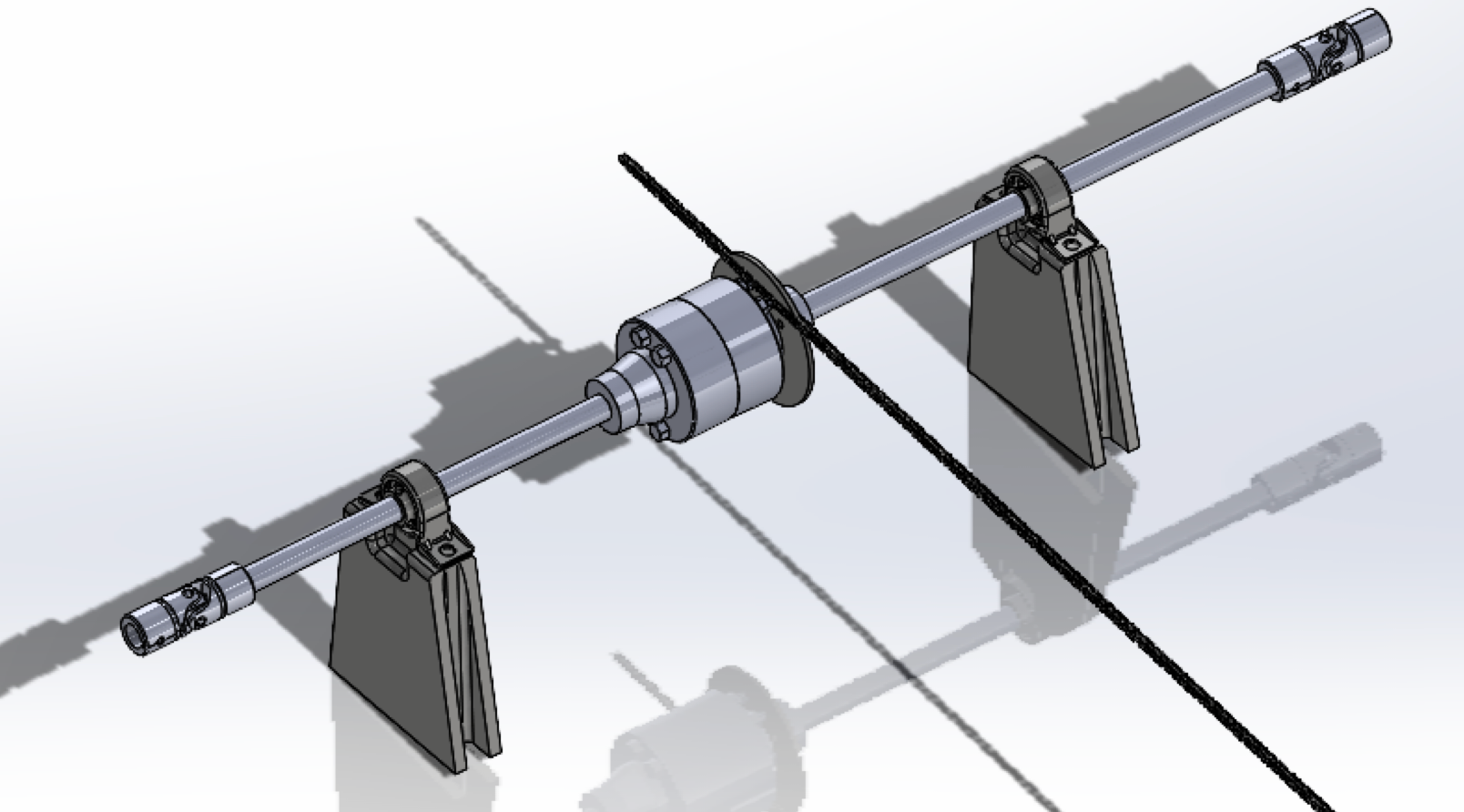
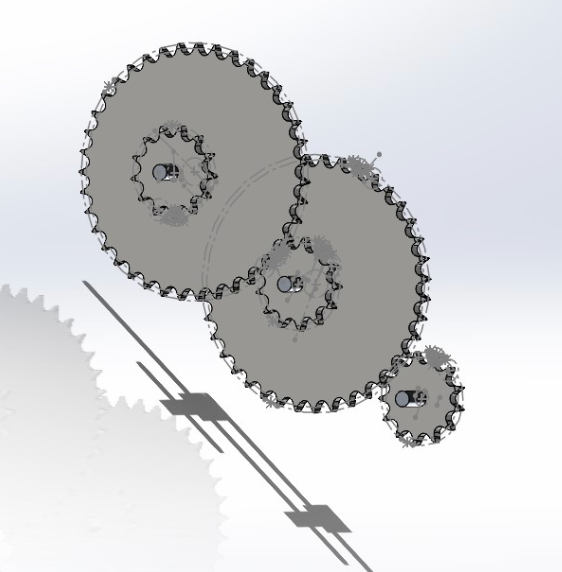
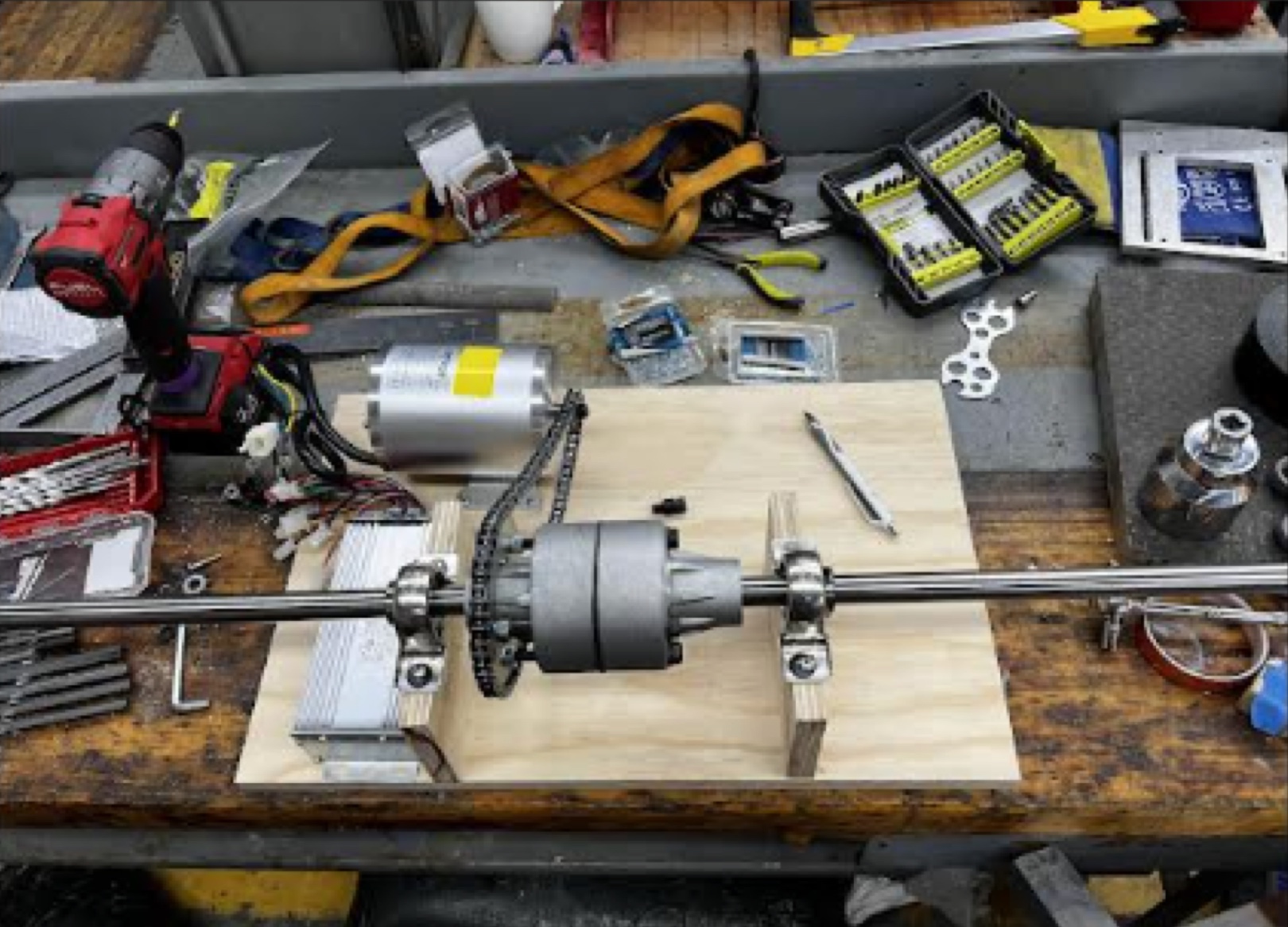
Design Process
From component selection to system integration and leadership.
The design process was a multi-faceted challenge involving detailed analysis, modeling, and hands-on collaboration. It began with rigorous analysis of motor performance curves to inform our component choices. As the lead for the custom 16:1 gearbox, I managed its design from concept to detailed modeling, carefully considering factors like sprocket choices, mounting points, and minimizing frictional losses to ensure smooth power transmission.
Beyond technical design, my role extended to leadership and representation:
- Leading a 10-member team to the Chicago Auto Show.
- Managing all technical documentation and prototype development for the event.
- Representing the university and presenting our work to industry professionals and public audiences.
- Coordinating cross-functional collaboration between the design, engineering, and presentation teams to ensure a unified and professional showing.

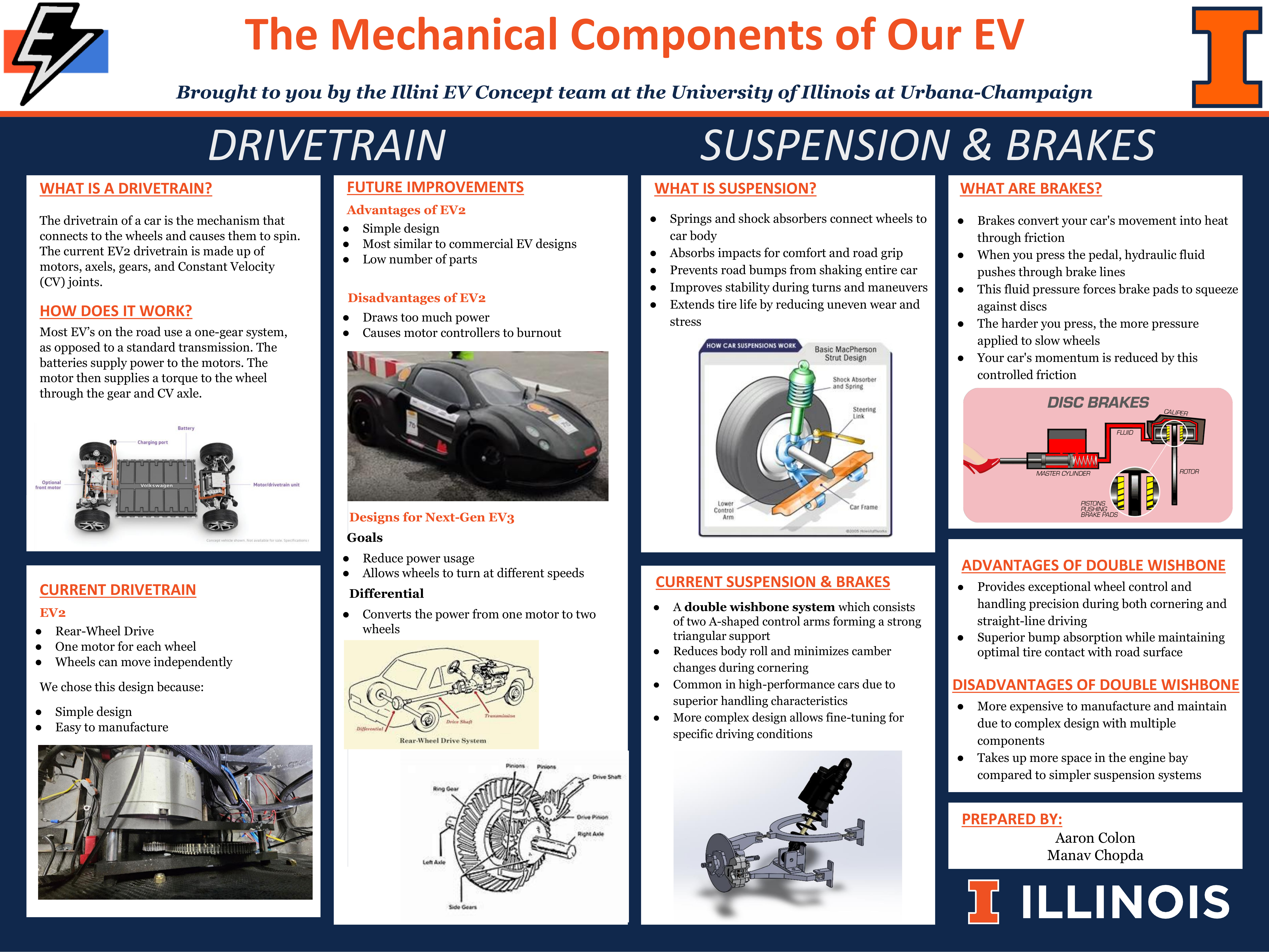
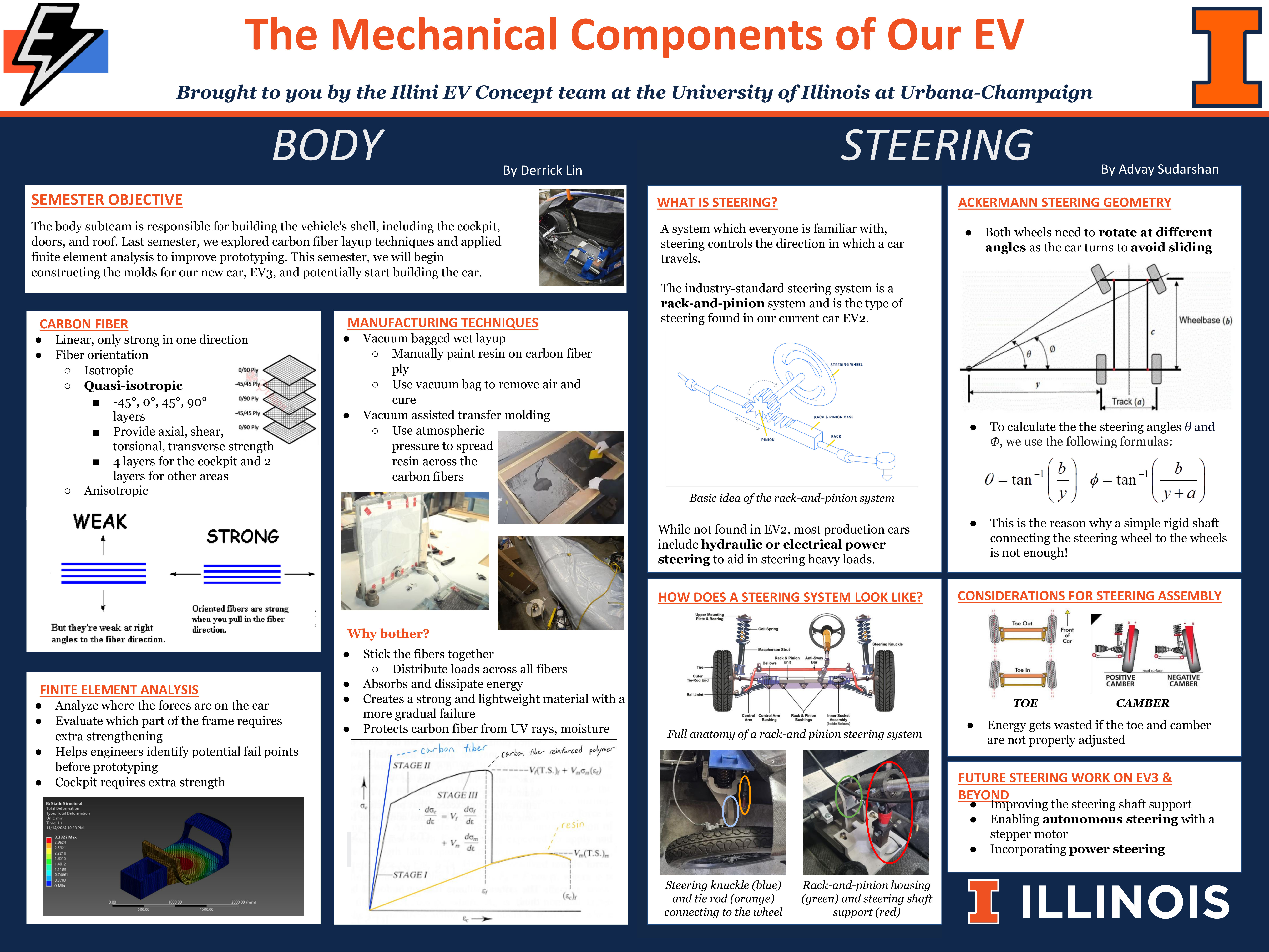
Key Achievements
Measurable improvements and successful initiatives.
- 25% Efficiency Improvement: Redesigned the drivetrain from a dual-motor to a single-motor with differential, resulting in a significant boost in overall efficiency.
- Custom Gearbox Design: Led the design of a 16:1 reduction gearbox tailored to the motor's optimal performance range.
- Advanced Testing Systems: Developed testing jigs and benchmarking systems to validate and optimize drivetrain performance for the Shell Eco-marathon.
- Chicago Auto Show Lead: Successfully led a 10-member team, managing the technical and logistical aspects of presenting our vehicle at a major industry event.
Result
Driving innovation and representing excellence.
The transition to a single-motor differential drivetrain marked a major step forward for the team, yielding a quantifiable 25% improvement in efficiency—a critical metric for success in the Shell Eco-marathon. The development of modular testing jigs has created a legacy of data-driven design that will benefit the team for generations to come.
Furthermore, leading the team at the Chicago Auto Show provided an invaluable platform to showcase our engineering capabilities. It demonstrated not only our technical achievements but also our ability to manage complex projects and communicate our innovations effectively to a broad audience, solidifying the university's reputation for excellence in automotive engineering.